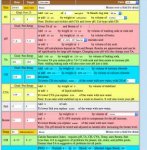I started noticing what appears to be almost a yellow grainy texture throughout my pool in the past week or so. It's not yellow algae. It's literally like thousands of little yellow dots. It's through entire pool, walls and floor. I tried brushing and vacuuming to no avail. I have had no issues with pool chemistry until ironically a week ago. I shocked my pool four days ago and for grins and giggles I added some Jack's Yellow Stuff immediately prior to shocking. Rechecked levels yesterday and there was no chlorine. Shocked pool again yesterday. Checked all levels today. Using a Taylor K-2006 (FAS-DPD) test kit, here are my results from today:
Chlorine - 0
pH - 7.4
Alk - 60
Calcium Hardiness - 210
CYA - 110
Water is crystal clear. Current pool temp is 90 degrees. Thought the high air temps might be eating away at the chlorine, but not like this. My CYA has always been extremely high consistently since I started testing after my pool fill last year after getting new plaster (only owned this home for a year). We've had very large amounts of rain in Houston and I have drained excess water big time over the past several months. And still have a very high CYA.
The Taylor test kit included a Taylor "watergram" water balance calculator. My resulting "saturation index" is a -0.5. Yes, that's a negative 0.5. According to the calculator, it says any index less than -0.3 "may be corrosive to concrete, plaster, or metal surfaces". And I'm guessing the visual distortion on my walls and floor is the beginning stages of etching.
I'm at a loss. I've never had zero chlorine along with slightly low pH and Alk and fairly normal calcium hardiness (which may be due to all the shocking recently). I am wide open for suggestions on how to turn this problem around.
IG, 23k gals, new plaster 2014
Hayward DE model 4820 filter, Hayward Super II pump, Pentair Chlorinator #320 - all new in 2014
Kreepy Krauly cleaner, one skimmer, single drain pool floor, city water
Chlorine - 0
pH - 7.4
Alk - 60
Calcium Hardiness - 210
CYA - 110
Water is crystal clear. Current pool temp is 90 degrees. Thought the high air temps might be eating away at the chlorine, but not like this. My CYA has always been extremely high consistently since I started testing after my pool fill last year after getting new plaster (only owned this home for a year). We've had very large amounts of rain in Houston and I have drained excess water big time over the past several months. And still have a very high CYA.
The Taylor test kit included a Taylor "watergram" water balance calculator. My resulting "saturation index" is a -0.5. Yes, that's a negative 0.5. According to the calculator, it says any index less than -0.3 "may be corrosive to concrete, plaster, or metal surfaces". And I'm guessing the visual distortion on my walls and floor is the beginning stages of etching.
I'm at a loss. I've never had zero chlorine along with slightly low pH and Alk and fairly normal calcium hardiness (which may be due to all the shocking recently). I am wide open for suggestions on how to turn this problem around.
IG, 23k gals, new plaster 2014
Hayward DE model 4820 filter, Hayward Super II pump, Pentair Chlorinator #320 - all new in 2014
Kreepy Krauly cleaner, one skimmer, single drain pool floor, city water
Last edited:



